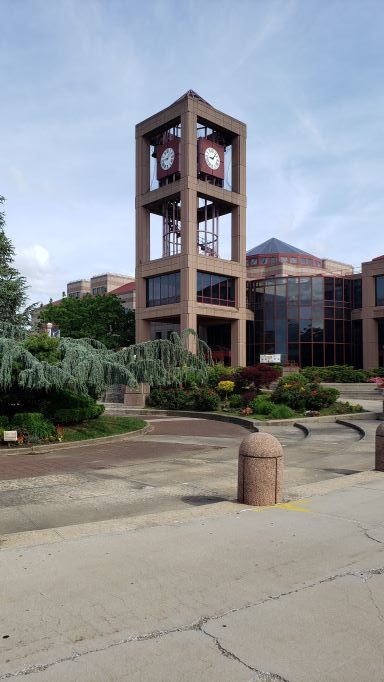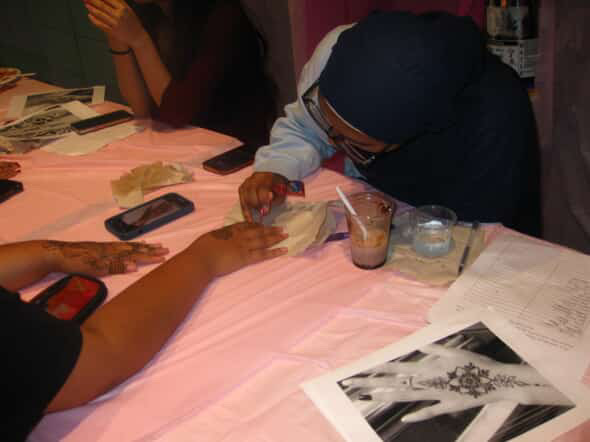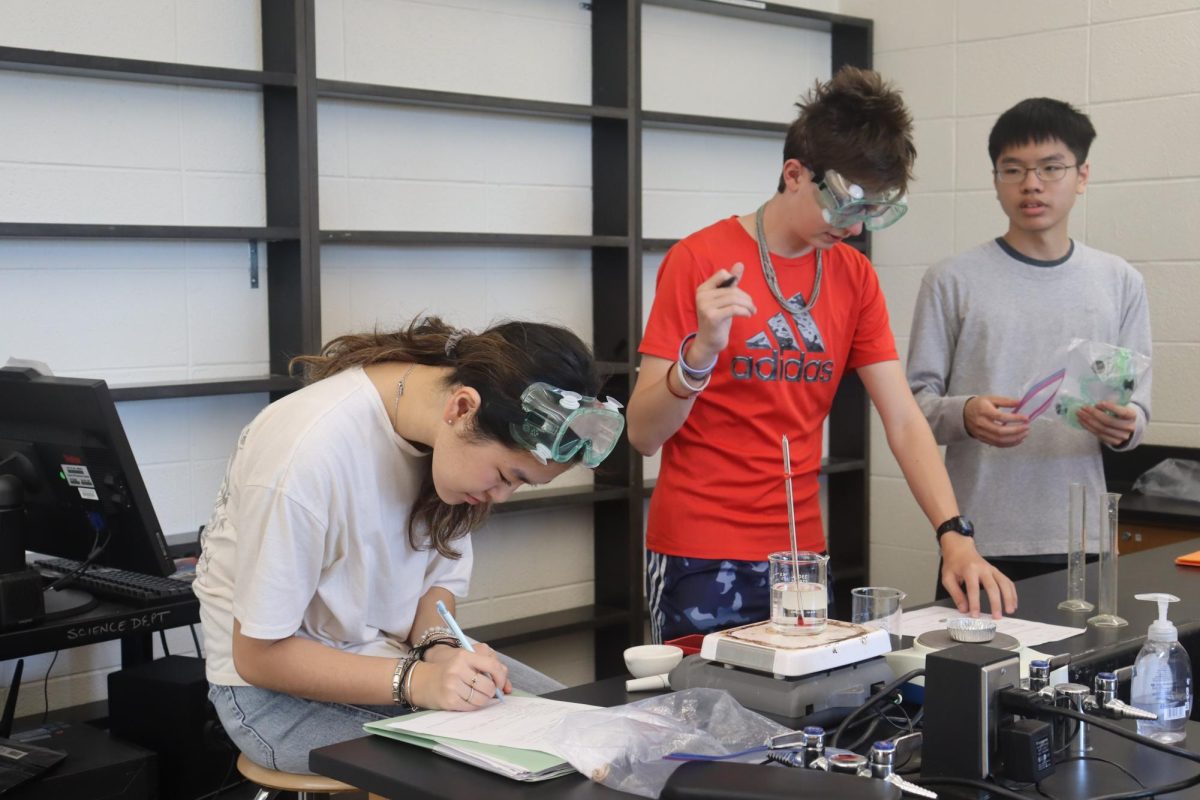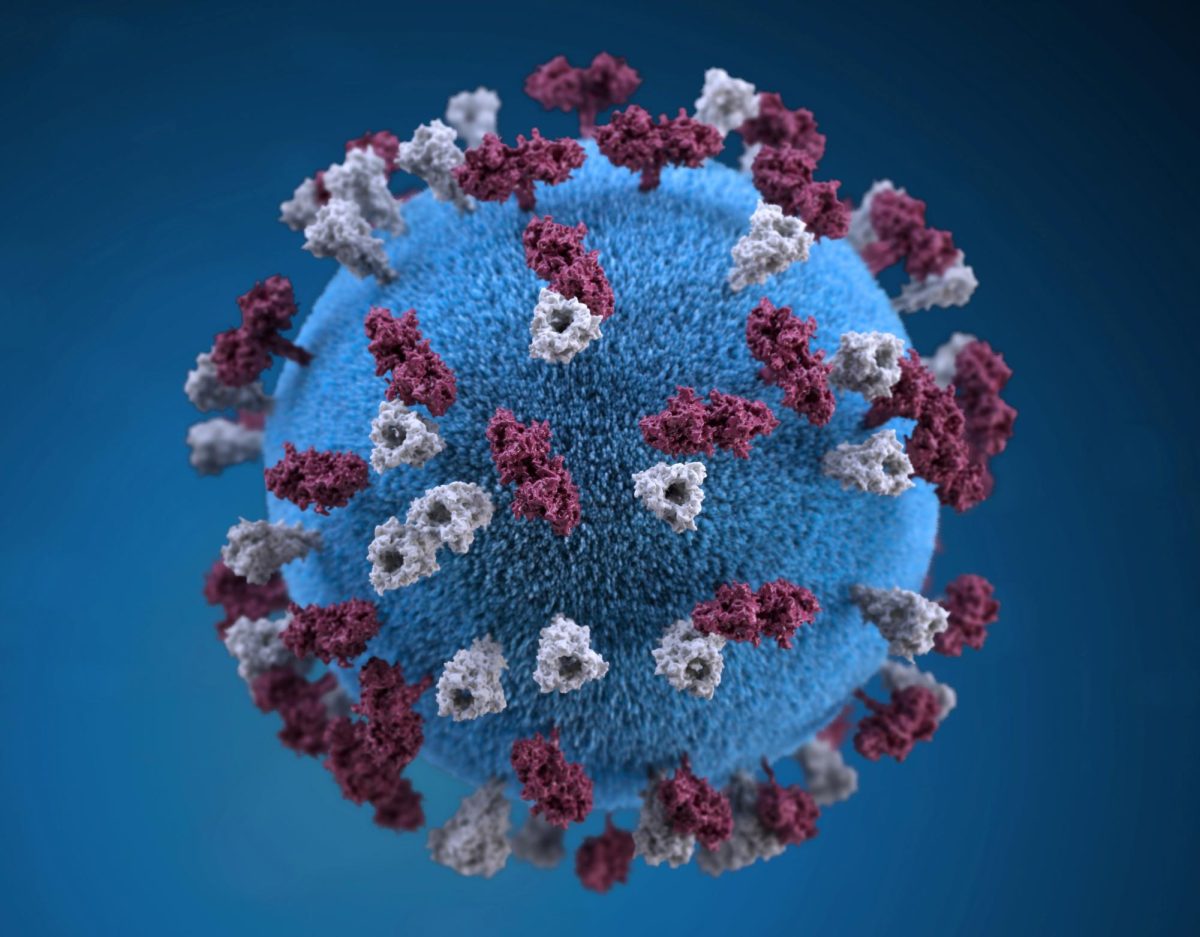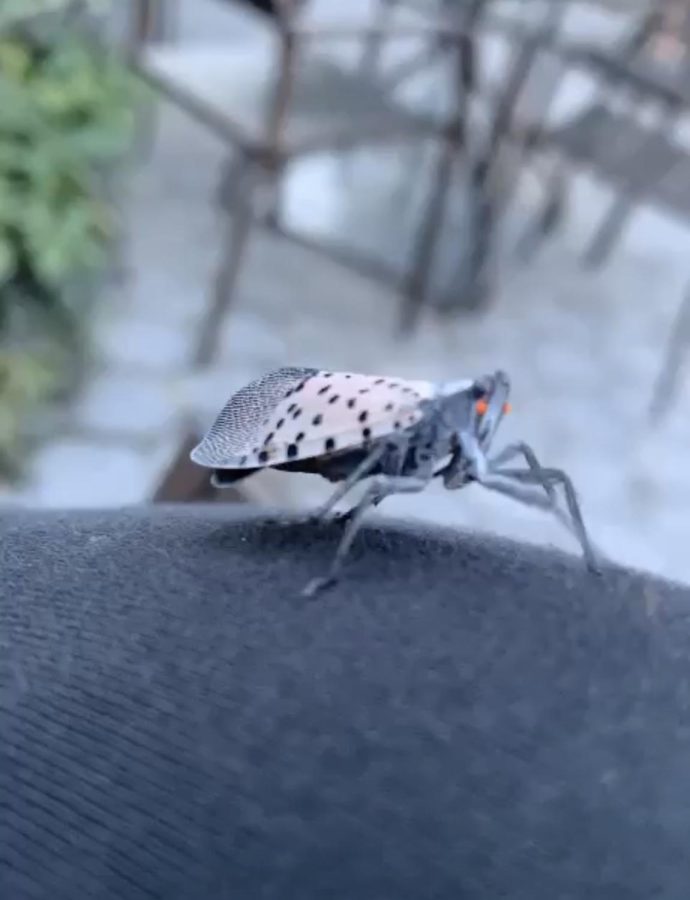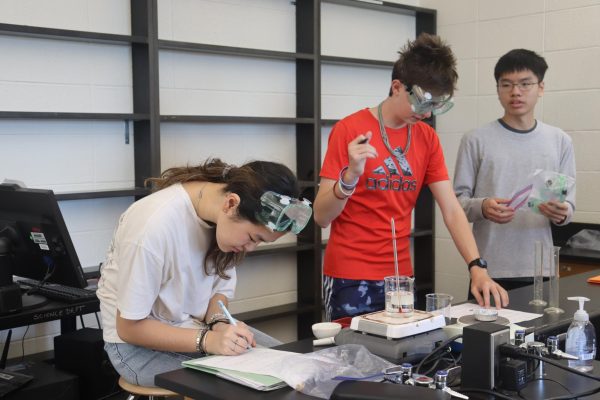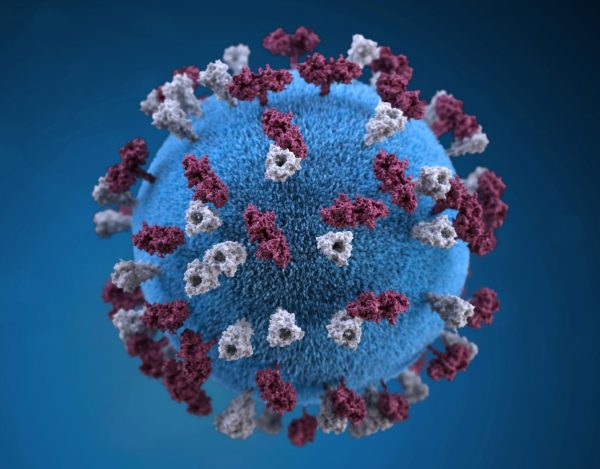Insect invaders: The spotted lanternfly
The invasive species, the spotted lantern fly, is now found at Townsend Harris.

If you look in the corners of the Townsend Harris courtyard, you’re likely to see numerous blotches colored bright red and pale brown squashed into the cement. These are smeared corpses of the spotted lanternfly. To some, it might be a revolting and macabre sight, but the killing of this creature is necessary. Perhaps you’ve even encountered a few, dead or alive, congregating in your own neighborhoods. Suddenly common in New York City, the lanternfly can be found practically everywhere in the Northeastern United States.
First seen in Pennsylvania eight years ago, the invasive pests are thought to have been stowed away on a stone shipment in 2012 from China. Because they are not good flyers, lanternflies have adapted by hitchhiking on cars, clothes, and a variety of other flat surfaces to spread all over the East Coast, being an invasive species. There are a few natural predators in the areas where they’re present, such as praying mantises, garden spiders and chickens; still, these species are not nearly enough to combat the rapid reproduction rate of the lanternfly.
“I saw one when I was hiking back in 2019, but I didn’t know what it was, so I didn’t kill it,” Sophomore Ava Pusing said. “Now, I’ve been seeing them much more often in the city. My friends and I have been making an effort to kill them; we’ve gotten six so far.”
Although the small insects may seem harmless, or even beautiful, they are extremely damaging to the agricultural industry and local ecology. Lanternflies feed on a wide variety of fruit plants and trees, putting the grape, orchard, and logging industries all at risk. They may not directly kill these plants, but they do make them far weaker, resulting in smaller yields and visible health declines. Even further, the honeydew that lanternflies secrete can host black fungi, inviting stinging bugs and leaving a sooty mold wherever they visit. They won’t hurt humans, but they have been known to be a terrible nuisance to us by climbing up our shirts, accumulating on our belongings, and joining us en masse indoors. According to a story from The Washington Post, a slew of them began attacking the author at a restaurant, landing all over him and diving into his drink. In Allentown, Pennsylvania, near where they first appeared, lanternflies have covered entire trees and patios in their honeydew, which drips down on the people sitting below.
Now, occurrences like these are beginning to happen even at THHS.
“The first time I saw a lanternfly was when it landed on my friend’s hair,” Junior Judy Liang said. “I don’t like how there’s so much goo when you squish them.”
“In the courtyard, one of them flew onto me,” added Junior Shranaya Kumar. “There was also a whole swarm of them on the track, so I got scared and ran away instead of killing them.”
“They seem very disgusting,” added senior Kylie Chiang.
At about one inch long, it is apparent that they can grow bothersome in large numbers. The adults are rather obvious, with large, beige wings and distinct black spots. Underneath is a layer of blood orange, with more spots and a white band.
In November, we’ll see them disappear momentarily, as it’ll be the end of this generation’s life cycle. However, groups of 30 to 60 eggs will be lying in wait; they are small, placed in neat rows, and covered in a fluid similar in color and consistency to mud.
Once the winter storms cease around April, they will make their debut as nymphs, now entirely black with white spots. As they have yet to grow wings, they’ll be found climbing up bushes and trees. From then to July, they’ll experience four instars, or stages of development, where they’ll change color to black and red with white spots. Their length during the nymph stage is ½ to ⅛ inch. Soon after, they’ll become the adults we all know and hate once more.
The USDA strongly urges everyone to help deplete lanternfly populations by keeping a lookout for honeydew, the aforementioned “sooty mold,” and a fermented smell coming from oozing plants. These are all signals that a lanternfly has visited that area and is lurking nearby. It is also helpful to check smooth surfaces for mud-like egg masses. If you happen to find an egg mass, it should be placed in a Ziploc bag with hand sanitizer and disposed of appropriately.
Lanternflies should be promptly killed and reported if found outside of quarantine areas. The USDA instructs people to take a picture of the bug, egg mass, or infestation and include a reference, such as a coin or pen; then note the address, GPS coordinates and intersecting roads. Email the information to spottedlanternfly@agriculture.ny.gov once you are finished. If you’re going through a quarantine area, thoroughly examine all your things to check for any stowaways. More resources on how to help are available here.
Your donation will support the student journalists of The Classic. Your contribution will allow us to purchase equipment, support our extracurricular events, celebrate our staff, print the paper periodically, and cover our annual website hosting costs.

Carolina is a senior at Townsend Harris High School. She really likes The Classic, especially her beloved department, Sci & Tech. She really loves...



















